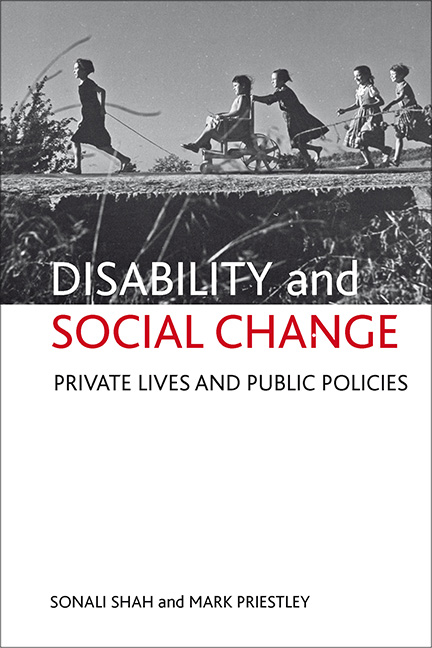three - Keeping it in the family
Published online by Cambridge University Press: 01 September 2022
Summary
The stories summarised in Chapter Two showed just how important it was for people to be able to draw on the resilience or resources of those closest to them at key turning points in their lives. The same stories showed what can happen to people's lives in the absence of such support. This chapter examines experiences of family life, using examples from the three generations to illustrate how social trends and public policies have affected choices and opportunities for young disabled people to develop and sustain kinship relationships. The discussion identifies a broad distinction between two competing life trajectories – inclusion in the private life of the family and exclusion from family life in public institutions.
This first section deals mainly with family relationships in the private domain. The examples highlight the importance attached to family as a site for acceptance and social inclusion. They also illustrate how people sometimes attribute disruptions in family relationships to disability issues. The discussion draws attention to gendered divisions of emotional and caring labour between birth parents, including the significance attributed to maternal advocacy and paternal abandonment. However, it also points to the positive influence of extended family resources, such as step-parenting and grandparenting. These experiences are set in the context of policy developments and changing family patterns during the 20th century and their implications for disabled children.
The second section focuses on childhood experiences of separation from family life arising from institutional segregation for the purposes of medical treatment or schooling (these contexts are then addressed in more detail in Chapters Four and Five, respectively). The examples illustrate, often graphically, how public policies and institutions can create real barriers to family life with sometimes lifelong implications. They also point to some of the important changes that have taken place since the 1940s.
Life at home – acceptance and rejection
The life stories collected for this book conveyed much about intimate family relationships between mothers, fathers and disabled children but they also revealed traces of wider social changes since the Second World War. These included changes in public policies affecting disabled families and demographic patterns of change in the structure of families more generally.
- Type
- Chapter
- Information
- Disability and Social ChangePrivate Lives and Public Policies, pp. 47 - 68Publisher: Bristol University PressPrint publication year: 2011



